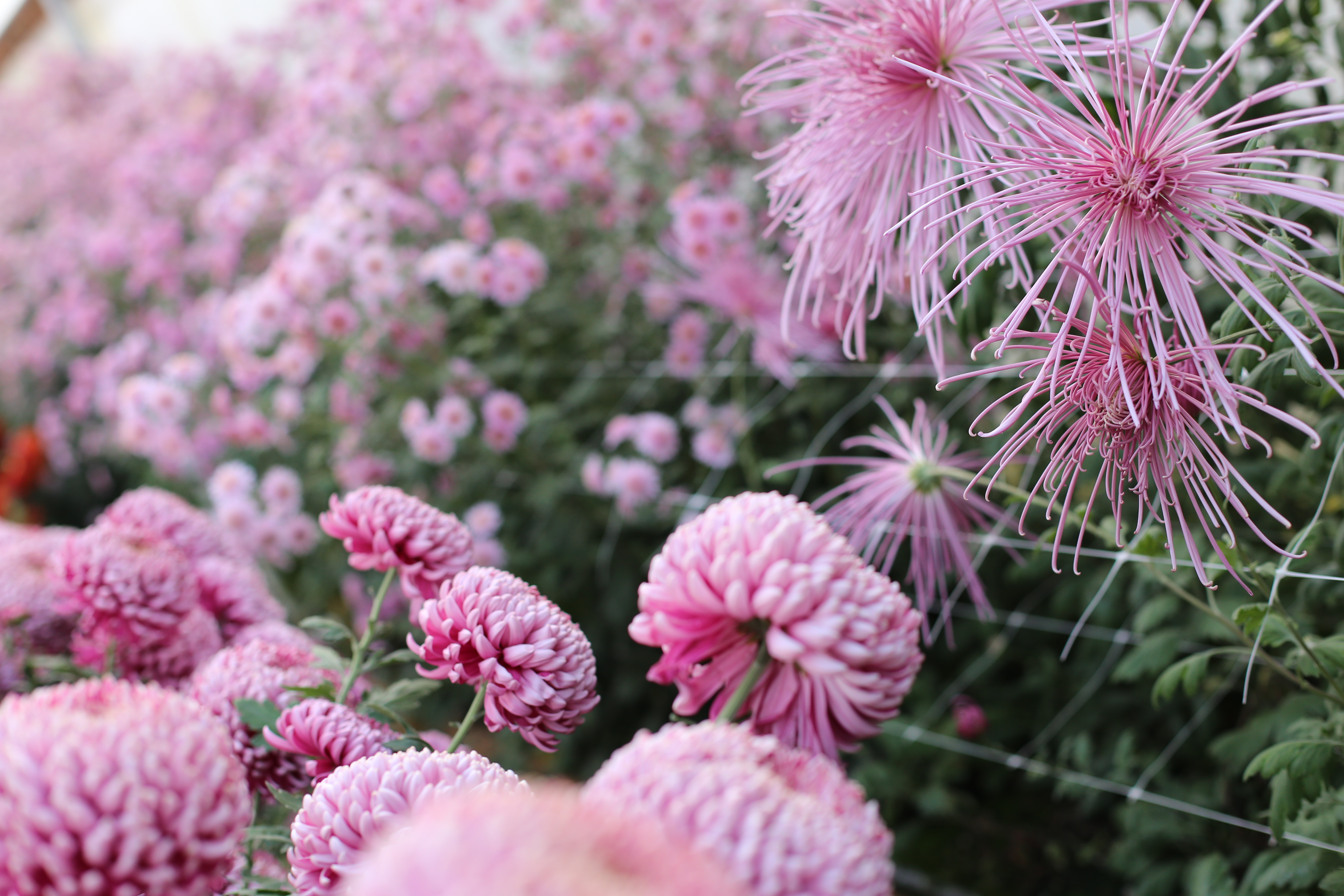The Cheerful Chrysanthemum: A Deep Dive
Chrysanthemums, often just called “mums,” are like the rockstars of the autumn garden. When everything else is starting to fade and think about winter naps, these guys burst into a riot of color. They’re not just pretty faces, though. They’ve got a long and interesting history, and there’s a whole lot more to them than meets the eye.
A Trip Down History Lane
Did you know that chrysanthemums have been around for centuries? Their story starts way back in ancient China, where they were cultivated as far back as the 15th century BC! Initially, they weren’t just grown for their looks; they were also used for medicinal purposes and even as a culinary ingredient. Imagine sipping on chrysanthemum tea! Over time, their beauty became more and more appreciated, and they eventually made their way to Japan, where they became so beloved they even have a National Chrysanthemum Day! It wasn’t until the 17th century that these floral gems finally arrived in Europe, and from there, they spread across the globe, becoming a staple in gardens everywhere.

More Than Just Fall Flowers
While we often associate chrysanthemums with the cooler months and the vibrant colors of fall, there’s a surprising amount of diversity within the chrysanthemum family. You can find them in a huge range of shapes, sizes, and colors – from tiny button-like blooms to large, showy pompons, and in almost every shade imaginable, except true blue. This incredible variety means there’s a chrysanthemum out there for just about every taste and garden style.
How to Keep Your Mums Happy
Thinking about adding some mums to your garden or want to keep the ones you have thriving? Here are a few key things to keep in mind:
:max_bytes(150000):strip_icc()/GettyImages-2150727737-4215d01df1d8476fafa62631b8242134.jpg)
# Location, Location, Location
Chrysanthemums are sun worshippers. They need at least six hours of direct sunlight each day to bloom their best. So, pick a spot in your garden where they can soak up those rays.
# Soil Matters
Just like us, mums like well-drained soil. If the soil stays soggy, their roots can get waterlogged and lead to problems. Adding some organic matter, like compost, can help improve drainage and provide them with the nutrients they need.

# Watering Wisely
Consistent watering is important, especially when they’re actively growing and blooming. However, you want to avoid overwatering. It’s best to water deeply when the top inch of soil feels dry to the touch.
# Pinching for Bushier Blooms
Here’s a little trick that can make a big difference: pinching. Throughout the spring and early summer, you can gently pinch off the tips of the stems. This encourages the plant to branch out, resulting in more stems and, ultimately, more flowers in the fall. Stop pinching about a month before you expect them to bloom.
# Feeding Time
Chrysanthemums are relatively light feeders, but a balanced fertilizer applied a couple of times during the growing season can give them a boost. Avoid fertilizing heavily in late summer or fall, as this can affect their blooming.
# Dealing with Pests and Diseases
Like any plant, mums can sometimes face challenges from pests like aphids or diseases like powdery mildew. Keeping an eye on your plants and addressing any issues early on is key. Good air circulation can also help prevent fungal diseases.
Why Mums Are Garden Superstars
Beyond their stunning beauty and the fact that they bring color to the autumn landscape, chrysanthemums are pretty low-maintenance once they’re established. They’re also relatively hardy and can tolerate some light frost. Plus, they make fantastic cut flowers, so you can bring their beauty indoors to enjoy as well.
In Conclusion
Chrysanthemums are truly remarkable plants with a rich history and a dazzling array of colors and forms. Whether you’re a seasoned gardener or just starting out, these cheerful blooms are a wonderful addition to any landscape, bringing joy and vibrancy to the fall season. With a little care and attention, you can enjoy their beautiful flowers year after year.
Frequently Asked Questions
Are chrysanthemums annuals or perennials?
Generally, garden chrysanthemums are considered tender perennials. This means they can survive for more than one year, but they may not be reliably hardy in colder climates without some winter protection. In many regions, they are often treated as annuals and replanted each year.
When is the best time to plant chrysanthemums?
The best time to plant chrysanthemums is typically in the spring or early summer. This gives them plenty of time to establish a strong root system before the stresses of summer heat and then their fall blooming period. You can also plant them in the fall, but they may need extra care to survive their first winter.
How long do chrysanthemums bloom?
Chrysanthemums are known for their relatively long blooming period, often lasting for several weeks in the fall. The exact duration can depend on the variety, the weather conditions, and the overall health of the plant.
Can I grow chrysanthemums in pots?
Absolutely! Chrysanthemums thrive in containers as long as the pots are large enough to accommodate their root system and have good drainage. Container-grown mums can also be moved to more protected locations during harsh weather.
Do deer eat chrysanthemums?
Chrysanthemum Plant
